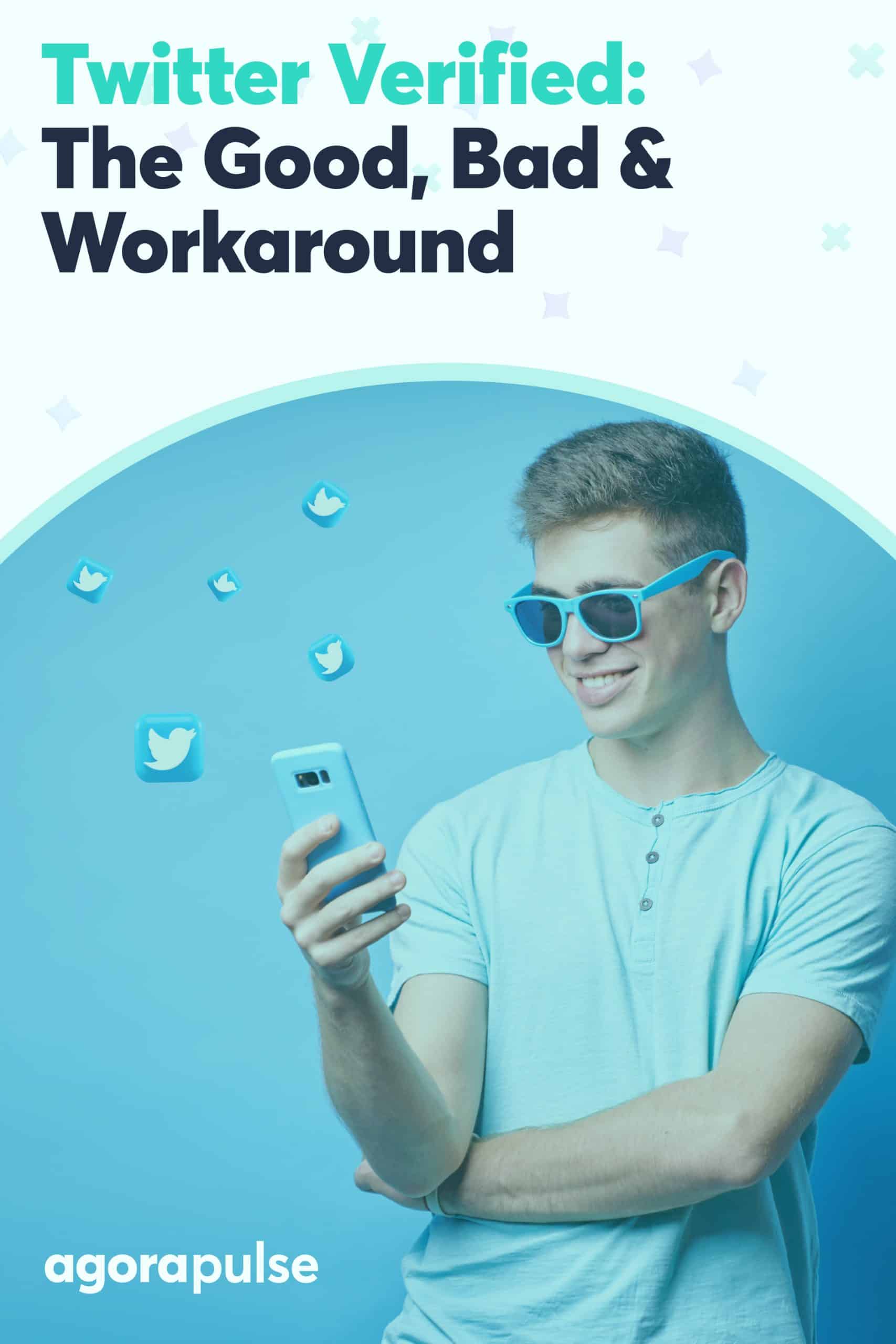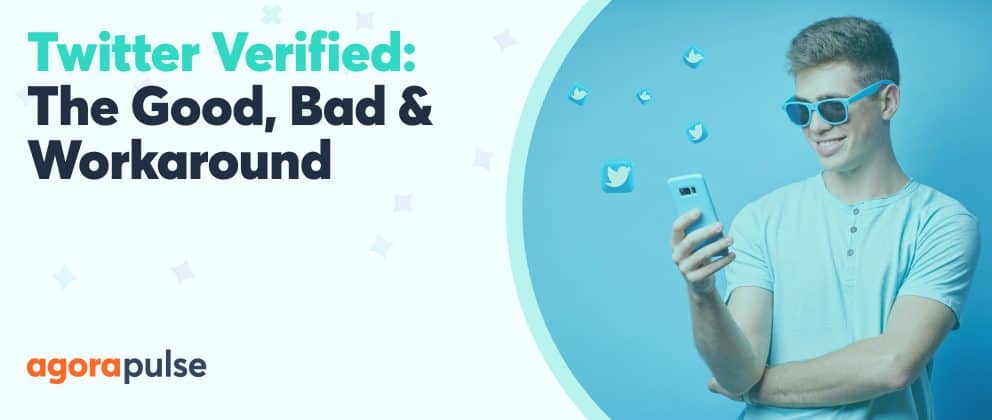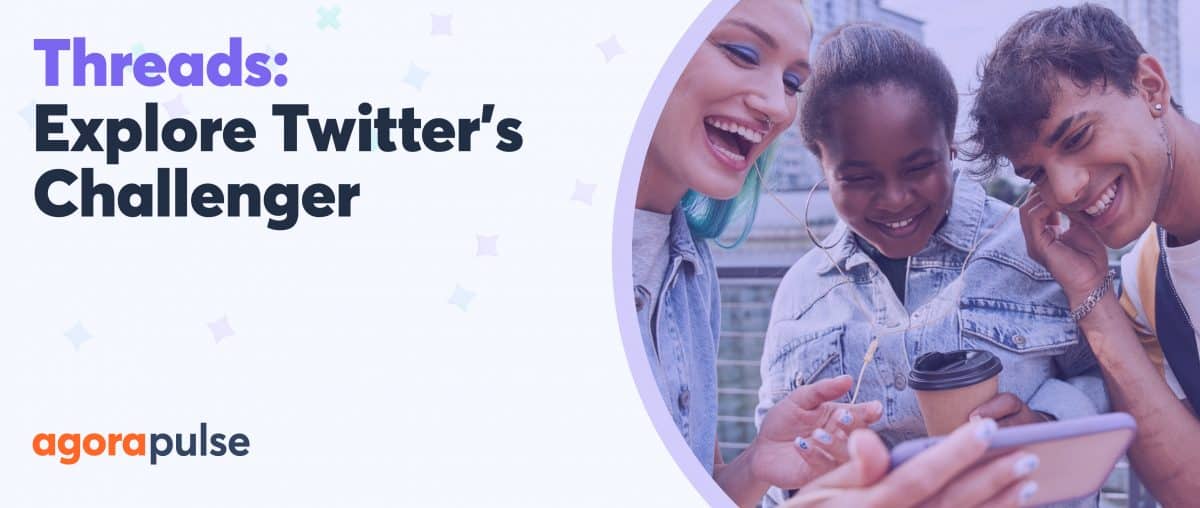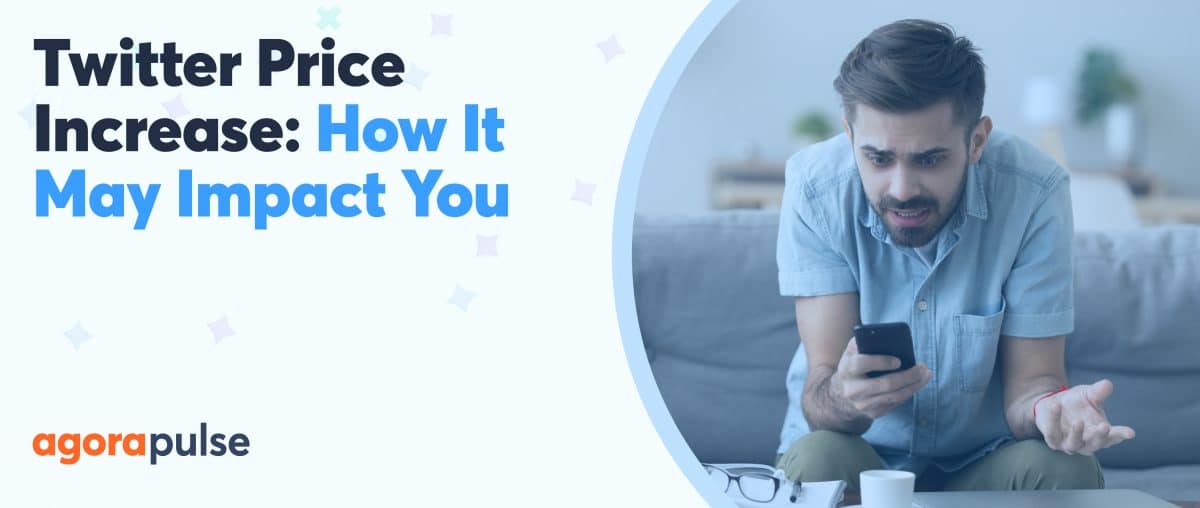The only reason Elon Musk bought Twitter–in October 2022–was because he wanted to build a “maximally trusted” platform that encouraged “free speech.” He assured us, back then, that he most definitely wasn’t in it to make money.
Did you believe him?
I didn’t. And having just heard about his new “blue tick” verification policy that basically means you now have to pay if you want to go viral on Twitter, I don’t think I’ve been proven wrong.
Hiding most of Twitter behind a paywall is definitely not something a man who has no interest in making money from Twitter would do, is it?
Join me to get the lowdown on what this new “blue tick” policy really is, what it means for you as a business, and how to work around the issues that this new idea presents.
What Did Elon Musk Say?
Starting April 15th, only verified accounts will be eligible to be in For You recommendations.
The is the only realistic way to address advanced AI bot swarms taking over. It is otherwise a hopeless losing battle.
Voting in polls will require verification for same reason.
— Elon Musk (@elonmusk) March 27, 2023
OK, let’s unpack this. What is the second richest man in the world really saying with this announcement?
Elon Musk is doing three things:
- From April 2023, Musk will be phasing out Twitter’s old blue tick verification process.
In the days before Musk, the iconic Twitter Blue check mark was only issued to accounts that met certain criteria and had, therefore, earned the right to display this notable mark of credibility and authenticity on their profiles. No money was exchanged for the ceremonious blue badge of honor, it was earned. That’s what made the blue tick credible. From April 15, 2023, legacy Twitter Verified users will need to pay $8+ a month to keep their blue tick. - From April 15, 2023, Musk will be phasing in a new blue tick verification process called Twitter Blue.
From April 15 onwards, anyone will be able to get a blue tick on their profile. They don’t need to meet any special criteria. They just need to prove they are who they say they are–but only if they’re prepared to pay $8 a month for the privilege. With this blue tick subscription, blue tick tweeters will get the luxury of being able to post longer tweets and videos, and edit or un-send a tweet.Plus, they’ll be able to …
Vote in polls (no tick, no vote)
Have their content prioritized in searches, and in people’s “For You” feed* (no tick, no voice)
Have two-factor authentication on their account (no tick, no security) - Last December, Musk introduced a new ‘blue tick for business’ scheme.
If a business pays Musk $1,000 a month (minimum), they’ll get the privilege of a GOLD check mark on their profile. This will mark them as a “Verified Organization” on Twitter. For this gold badge of honor, not only will verified organizations get the same Twitter Blue privileges as a “normal” blue ticker, but they’ll also get the ability to add affiliates to their profile (for an additional $50 per affiliate, per month) to grow their network.
Having since received a tremendous backlash over the prioritization of blue tick content in searches and on people’s go-to “For You” feeds, Musk is now claiming that, “since you asked for it,” users will still be able to see the accounts they follow in their “For You” feed.
Why Is Elon Musk Doing This?
“[It’s] the only realistic way to address advanced AI bot swarms taking over. It is otherwise a hopeless losing battle.” (Elon Musk)
Musk states that if he gives the verified blue tick users more visibility–by prioritizing their tweets in the “For You” feed and searches–and algorithmically suppresses the non-blue tick tweeters, he will eventually expose and eradicate all bots, troll farms, and fake accounts from the platform.
Perhaps he reckons that the real people of Twitter–who are who they say they are–will sign up in their droves to become part of the blue tick brigade, just so that their content will be seen by others. Bots can’t pay subscriptions. Fake accounts can’t prove their identity. So if all the “real” people get authenticated (by paying $8 a month), the only ones left, without a blue tick, will be exposed as bots, spammers, and fakers.
Or Maybe This Is the Real Reason
While Musk’s quest to banish evil bots from Twitter is a noble one–and one that could certainly work if everyone agreed to pay the subscription–I don’t believe that it’s the real reason behind his Twitter Blue scheme.
Since Elon Musk’s chaotic takeover of Twitter, he’s managed to lose over 500 advertisers, causing the company’s daily revenue rate to drop by 40%, YoY.
“The chaos from Elon Musk’s Twitter takeover has driven away advertisers as the company struggles to hang onto its most significant source of revenue.” (Investopedia)
Having quickly realized that making money from advertising wasn’t going to work as expected, Musk had no choice but to turn Twitter into a subscription-based model and start forcing users to pay a monthly fee, just to get their tweets seen by others.
Cast your mind back to when Musk first began to peddle this idea.
To test the waters, he loosely suggested that paying a monthly fee to get the maximum benefit from the platform was the future of Twitter. Do you remember his response to the backlash he received over this suggestion?
We need to pay the bills somehow! Twitter cannot rely entirely on advertisers. How about $8?
— Elon Musk (@elonmusk) November 1, 2022
Turning Twitter into a money maker makes more sense than his “battle to banish bots” justification.
When Musk first purchased Twitter, he declared that the platform would be a “digital town square,” where important matters could be discussed in a safe, open forum.
⚡️⚡️⚡️ Power to the People ⚡️⚡️⚡️
— Elon Musk (@elonmusk) November 5, 2022
But is minimizing people’s voices and removing their right to vote–unless they’re prepared to pay–creating a digital town square or is it creating a digital hierarchical divide?
What Does All This Mean for You as a Business?
It’s one thing knowing what Musk is up to with his Twitter Blue and ‘blue tick for business’ schemes, but what does it all mean for you, as a business that uses Twitter as a marketing or networking platform?
Let’s look at the new blue tick verification process first, and the impact that paying $8 a month–if you want to go viral–might have on your business.
I always like to look for the positive in any situation. And there is perhaps a small positive if you’re a small business.
Previously, the coveted Twitter blue ticks were only reserved for celebrities or organizations with big reputations, lots of influence, and mass followings. Normal people and smaller businesses rarely got a look in. Now that anyone can buy a blue tick, has this leveled the Twitter playing field?
I guess in a way, it has.
But the downside of allowing everyone to have a blue tick is that the respect and status that the blue tick used to represent has gone.
If everyone has one, what makes one organization more respectable and credible than another? The blue tick now represents nothing, other than you can afford to pay Elon Musk $96 a year.
Also, what if you were doing fine before, without a blue tick?
You had a decent following, a decent level of engagement on your tweets, and a decent reach. If tweets by blue tickers are to be prioritized over those by non-blue tickers, suddenly your reach, engagement, and following are gone. Unless you cough up.
Plus, stories are already emerging from early-adoption blue tick subscribers that they haven’t seen an increase in engagement since they started paying for the subscription. They’re effectively paying to be ignored.
Although $8 a month isn’t much, you’re still having to assign budget just to get your content seen by your audience. And in this economic downturn, paying money–for what used to be a free service–to the second richest man in the world stings.
Let’s now look at the ‘blue tick for business’ scheme and see how paying over $1,000 a month for a gold tick, might affect your business.
If you’re a midsize enterprise, looking to grow your business network, I can see how paying $12,000 a year to become a “verified organization” on Twitter might be a worthwhile investment.
But it isn’t simply $12,000 a year. For the “blue tick for business” scheme to work–for you to grow a useful network on Twitter–you need to add affiliates. And lots of them.
At $50 a pop, that’s a lot of budget to invest in just one social media channel.
“$50,000 if you’re Disney or Apple is not unreasonable. It’s like what you would pay for your LinkedIn recruiting account. So there is a precedent here for businesses to pay for their verification. If you wanna trend, you’ve gotta be verified.” (Jason Calacanis)
The big brands with the big budgets win again.
The Good: How to Get Around Twitter’s Blue Tick Issue
Now for the good news!
There is a crafty little workaround that means you don’t have to pay $8 a month, just to get your content seen by your audience.
All you have to do is create a Twitter List.
You can create up to 1,000 Twitter Lists, add the accounts of your followers (you can add up to 5,000 accounts to each list), and encourage them to subscribe to it.
That way–blue tick or no blue tick–every time you post or tweet, your audience will see it on their timeline feed. And if they tweet about you, you’ll see it on your timeline.
Alternatively, you could always encourage your followers to create their own Twitter List and make sure that they add you to it, so they can keep seeing all your wonderful content and you can keep seeing theirs.
Another way to keep up with what “un-verified” Twitter users are saying about you–because you won’t see what they’re tweeting if they don’t have a blue tick–is to set up a listening search, using a social media management tool, like Agorapulse.
Social listening is a great way to “listen” out for mentions of your brand, product, or service from customers, fans, and even competitors.
Agorapulse has a dedicated Twitter Listening feature that allows you to set up searches that will listen out for specific keywords and mentions, and let you manage the tweets and retweets you get, all from within the Agorapulse platform.
You don’t have to enter Twitter once if you don’t want to.
Find out more about our Twitter Listening feature here or by booking a free demo.
Conclusion
Musk’s bold move towards a subscription-based social media platform could irreversibly change the social media landscape forever. Some believe that social media should be a subscription-based service anyway, and with Meta launching a similar ‘Meta Verified’ subscription-based service this month, is this just the tip of the iceberg for subscription-based social media?






